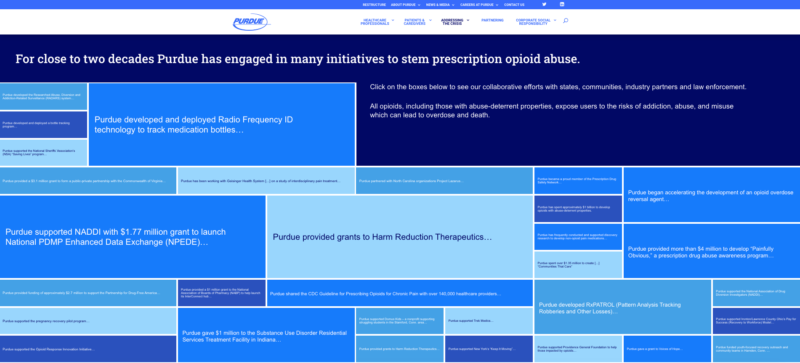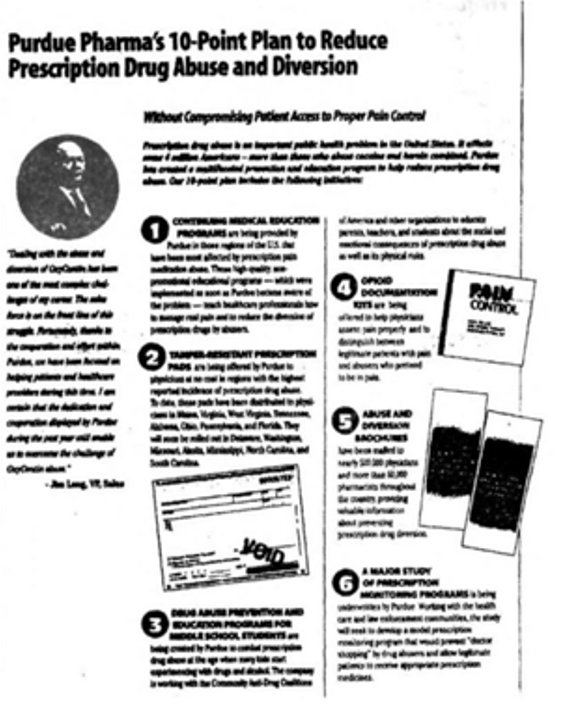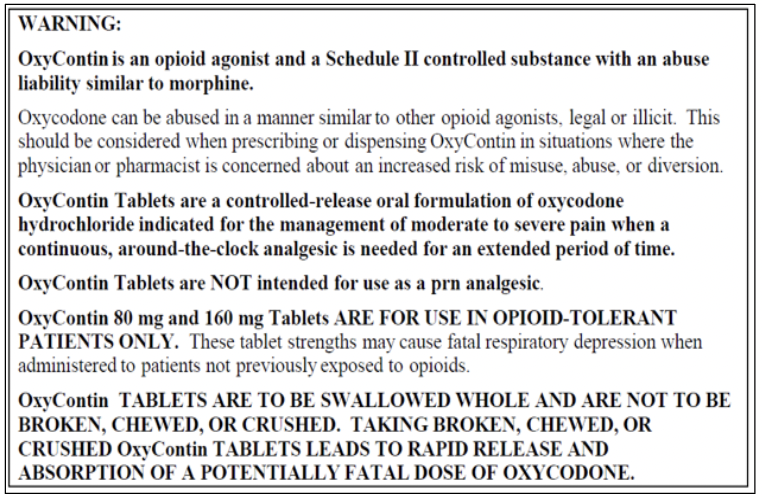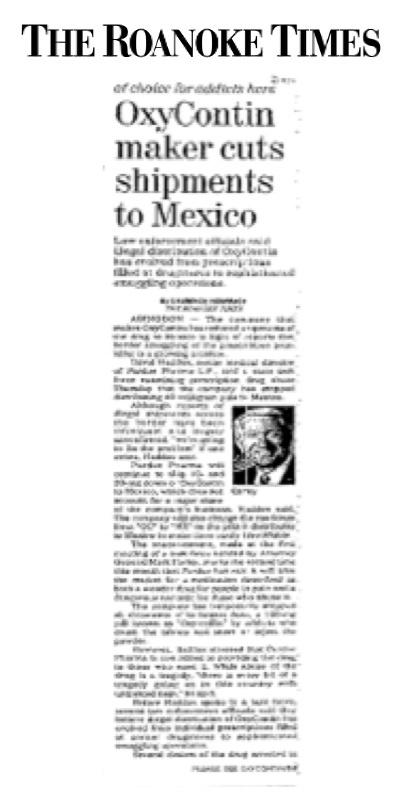Purdue Pharma Initiatives
Purdue Took Prompt Action When Problem Became Understood
Adverse event reports involving Purdue’s other extended-release opioid MS Contin, which was introduced in 1987, were always minimal – so both the FDA and Purdue expected a similar experience with OxyContin.
Purdue became aware of widespread abuse and diversion of OxyContin in different parts of the country in 2000, first from the U.S. Attorney in Maine, and promptly supported local authorities with resources.
In early 2001, Purdue reached out to the FDA and DEA to provide information, take direction and collaborate on solutions.
By July 2001, working with the FDA, Purdue updated the OxyContin label to add a Black Box warning that further emphasized the risks of abuse.
Purdue also updated its marketing materials, retrained its sales force and wrote letters to inform physicians about the new label.
A 2020 FDA review team found that following the 2010 abuse-deterrent reformulation of OxyContin, non-oral abuse decreased.[1]
In 2001, Purdue Stopped Distributing OxyContin to Mexico, A Potential Source of Illegal Shipments
“David Haddox, senior medical director of Purdue Pharma L.P., told a state task force examining prescription drug abuse Thursday that the company has stopped distributing 40-milligram pills to Mexico.”
“Although reports of illegal shipments across the border have been infrequent and largely unconfirmed, ‘we’re going to fix the problem’ if one exists, Haddox said.”
“The company will also change the markings from ‘OC’ to ‘MX’ on the pills it distributes to Mexico to make them easily identifiable.”
LAURENCE HAMMACK, OXYCONTIN MAKER CUTS SHIPMENTS TO MEXICO, MAY 18, 2001
Purdue Has Led Industry in Efforts to Prevent Abuse & Diversion With More Than 65 Initiatives[2]

2001
Purdue developed the Researched Abuse, Diversion and Addiction-Related Surveillance (RADARS) system to detect and study abuse, misuse and diversion on a nationwide basis. It is still implemented throughout the US today, with no involvement or influence by Purdue.
2002
Purdue voluntarily developed a risk management plan in coordination with the FDA to help detect and prevent opioid abuse and diversion.
2004
Purdue supported states that were considering adopting Prescription Drug Monitoring Programs (PDMPs).
2010
Purdue introduced the abuse-deterrent formulation of OxyContin.
2016
Purdue provided a $3.1 million grant to form a public-private partnership with the Commonwealth of Virginia to enhance its PDMP and the use of data within electronic health records.



